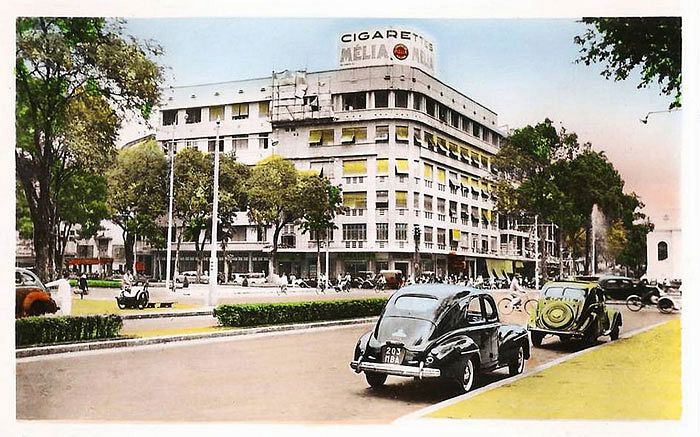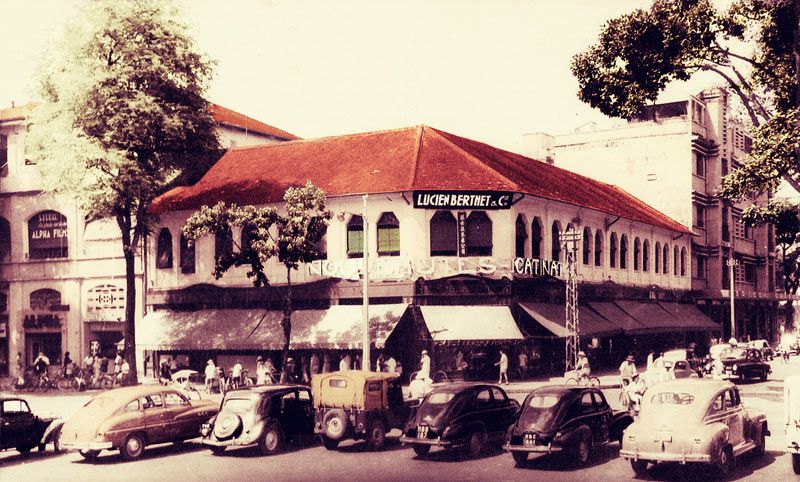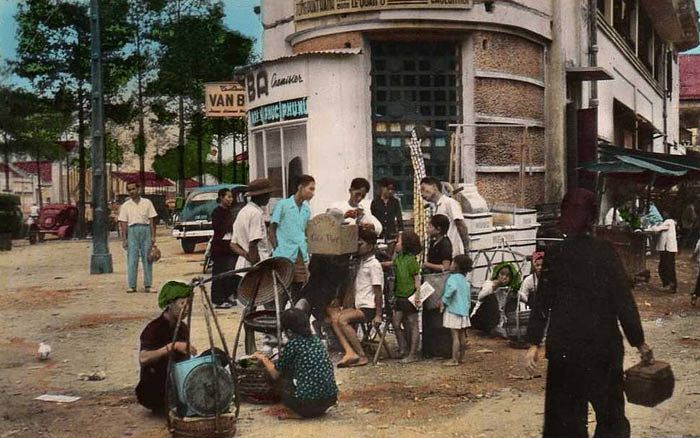Cleared in 1983 to create the Lê Văn Tám Park, the former Massiges or European Cemetery (Cimetière Européen) was the most famous French cemetery in Saigon. To coincide with the release of hitherto unseen pictures of the cemetery taken in 1970 by Frederick P Fellers (Indianapolis, USA), Tim Doling takes a look at the history of this old Saigon institution.
Saigon’s European Cemetery, later known as the Massiges Cemetery, was established in 1859 on the east side of rue Nationale (modern Hai Bà Trưng street), north of the city centre, initially to provide a final resting place for the French soldiers and sailors who had died during the conquest of Saigon.

At the outset, it was administered by the French Navy as a military cemetery. Some of its earliest occupants included French marine infantry soldiers Captain Nicolas Barbé (beheaded at the Khải Tường Temple on 7 December 1860), Lieutenant-Colonel Jean-Ernest Marchaisse (killed at Tay-Ninh on 14 June 1866) and Captain Savin de Larclauze (also killed at Tây Ninh on 7 June 1868); and Mekong River explorers Captain L Doudart de Lagree (died 12 March 1868 while leading a geographic survey and exploration of the Mekong River into Laos and China) and Lieutenant Francis Garnier (killed 21 December 1873 in Hà Nội). By 1895, the cemetery contained 239 military graves.

A view of rue Legrand de la Liraye (now Điện Biên Phủ street) with the main gate of the European Cemetery on the right.
During the 1870s, the European Cemetery acquired the popular name “jardin du père d’Ormoy” (Father d’Ormoy’s Garden), apparently because of the practice of the Navy’s Chief Medical Officer Dr Lachuzeaux d’Ormoy (1863-1874) of sending his most unruly patients to tend its lawns and flowerbeds.
However, by the late 1860s, civilians were also being buried in the European Cemetery, a trend undoubtedly reinforced during the early years of the colony by the high mortality rate from serious endemic diseases such as cholera, malaria, intestinal parasites and dysentery. A report of 1889 noted that “although there exist in our colony none of the terrible epidemics that all too often afflict our possessions across the seas, a visit to the European Cemetery in Saigon may painfully reveal the truth about the victims of the climate.”
Related Articles:
- [Photos] An Inside Look At 3 Of Saigon’s Most Intriguing Tombs
- The Story Of Saigon’s "Graveyard Of Traitors"
- Old Saigon Building Of The Week: Tân Định Church

A military memorial in the European Cemetery.
Intriguingly, the European Cemetery contained a relatively large number of tombstones with Germanic names, reflecting the preponderance of German merchant trading houses in Saigon, particularly before 1870. In one corner of the compound there was also a group of tombs belonging to a band of injured Russian seamen who had fled to Cam Ranh Bay in 1894 following their defeat at the Battle of Tsushima and later died in the military hospital in Saigon.
In around 1870, a smaller Vietnamese Cemetery (Cimetière Annamite or Cimetière Indigène) was opened immediately north of the European Cemetery. The street dividing the two compounds – modern Võ Thị Sáu street – was briefly named rue des Deux cimetières (Two cemeteries street) before it became rue Mayer in the late 1880s.

A corner of the European Cemetery.
From the end of the 19th century, as standards of hygiene improved and the colony prospered, the European Cemetery became the last resting place of choice for Saigon’s colonial politicians and administrators, among whose number were architect Marie-Alfred Foulhoux (1840-1892, see http://www.historicvietnam.com/foulhouxs-saigon/) and city mayor Paul Blanchy (1837-1901).
On 14 December 1912, this transformation of the European Cemetery into a burial place for the colonial elite prompted a critical report by the Courrier Saigonnais newspaper. It pointed out that while the cemetery contained an ever-increasing number of grandiose and well-maintained tombs belonging to high functionaries, many of the original soldiers’ and sailors’ tombs had been left abandoned and overgrown with vegetation. It also singled out for criticism the “sacrilegious” practice of exhuming poor people's graves within seven or eight years and relocating them elsewhere, presumably to make way for those of the rich and famous.
By the early 20th century, the interior of the cemetery was criss-crossed by pathways and planted with trees and shrubs by the staff of the Saigon Botanical and Zoological Gardens. It was surrounded by 2.5m high whitewashed walls, with its main gate in the southern wall of the compound on rue Legrand de la Liraye. This main gate was located directly opposite the northern end of rue de Bangkok, and after 1920, when rue de Bangkok was renamed rue de Massiges, the cemetery became known by the new name of Cimetière de la rue de Massiges.
Transferred by the French Navy to the care of the municipal authorities in the 1880s, the cemetery was administered thereafter by the Bureau du Conservateur des Cimetière, part of the Bureau du Service Régional d’Hygiène de Saigon, which had an office at 67 rue de Massiges (modern Mạc Đĩnh Chi street).
Many well-known figures of the later colonial era were buried here, including French naval officer Alain Penfentenyo de Kervéréguin (died 12 February 1946), missionary Grace Cadman (died 24 April 1946) and journalist and politician Henri Chavigny de Lachevrotière (died 12 January 1951). By all accounts, however, the most impressive tomb of that period was the grand mausoleum of Nguyễn Văn Thinh (died 10 November 1946), first President of the short-lived Autonomous Republic of Cochinchina (République Autonome de Cochinchine, 1 June 1946- 8 October 1947).
Check back tomorrow for Part II to see how the city's premier eternal resting place was turned into Lê Văn Tám Park.

Tim Doling is the author of the walking tours book Exploring Hồ Chí Minh City (Nhà Xuất Bản Thế Giới, Hà Nội, 2014) and also conducts 4-hour Heritage Tours of Historic Saigon and Cholon. For more information about Saigon history and Tim's tours visit his website, www.historicvietnam.com.














